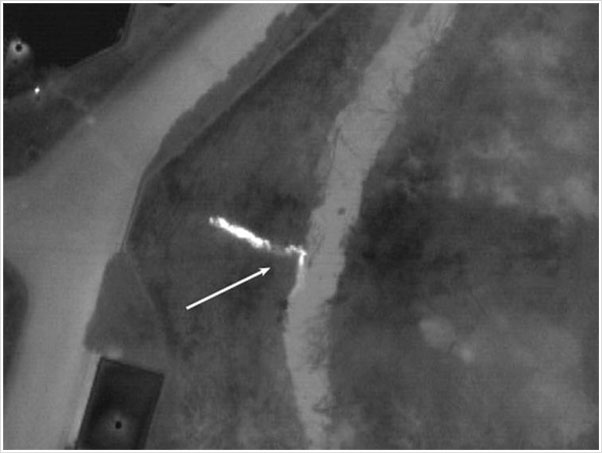AITScan™ Aerial Surveys
Aerial infrared (IR) thermal surveys can solve a variety of issues faced by large facilities, complexes, campuses, military bases, and even entire cities, by providing high-quality imagery.
These surveys provide valuable thermal data to decision makers for asset management planning and predictive maintenance (PdM).
Benefits of AITScan™ Reports
- Cost-effective and easy-to-analyze. Capturing larger areas at once, reports are created using high-angle straight down (NADIR) infrared imagery.
- Clear and concise imagery. Easy-to-understand reporting through ‘Plan View’ imagery.
- Number one in state-of-the-art imagery. We have become the leading infrared imagery company in the country through compiling the highest quality imagers, equipment, and refined techniques.
- Best product on the market. Our determination to deliver the best product results in numerous thermographic surveys for universities, cities, and industrial clients nationwide! Check out some of our clients.
How does it work?
Overview
Aerial thermography is the use of infrared imagery to detect heat. A grayscale picture presents temperature differences and emissivity of objects in the image, as shades of gray. Warmer objects appear lighter, while cooler objects appear darker.
Emission of Infrared Radiation
All objects above absolute zero emit infrared radiation. Infrared images only display objects emitting infrared wavelengths between 3000-5000 nanometers. Objects seen in visible light also emit heat and can be seen in the infrared imagery.
Recording and Modifying Images
We record infrared imagery on digital videotape and may later copy it to a VHS tape or a JPEG digital image file. Images are then modified in various ways, such as creating false-color images or adjusting brightness and contrast. We then store the digital images on CD-ROMs in JPEG format.
Aerial Thermography: Thermal Mapping
Steam System/HTHW Leaks
Underground steam lines are almost always readily visible with infrared imaging, even when no discernible problems exist. This is due to the natural loss of heat that occurs no matter how good the insulation. Heat loss from the lines will always make its way to the surface.
Problem areas are generally quite evident, having brighter white IR signatures that exceed the norm. Steam line faults normally appear as an overheated line or as a large hotspot in the form of a bulge or balloon along the line. Overheated lines often occur when the steam line is located in a conduit or tunnel. If there is a leak in the line, it will heat up the whole conduit with escaping steam. If a steam line is buried directly in the ground with an insulating jacket, a leak will usually saturate the insulation. This will render it largely ineffective and will begin to transfer heat into the ground around the leak, producing the classic bulge or balloon-like hot area straddling the line. Finally, some leaks may show up as an overheated manhole or vault cover. Manholes or vaults that contain steam system control apparatus which are leaking will often heat the covers to warmer than normal temperatures.
Steam line imagery can be a little misleading unless one understands and interprets the relative brightness and temperature of a given line correctly. A steam line that is the same temperature from one end to the other that passes under different surfaces and materials can exhibit a variety of temperature variations. For example, five different apparent temperatures will result from the same temperature line that runs under a grass-covered field, an asphalt parking lot, a concrete loading dock, a gravel-covered area and bare earth pathway.
High temperature hot water (HTHW), medium temperature hot water (MTHW) and low temperature hot water (LTHW) lines benefit similarly to steam distribution and condensate return systems, with an associated degree of difficulty in surveying due to the declining temperature difference to that of surface. Chilled water supply (CHWS) and chilled water return (CHWR) lines are usually cooler than the surface temperature and can be surveyed for thermal loss and leaks as well.
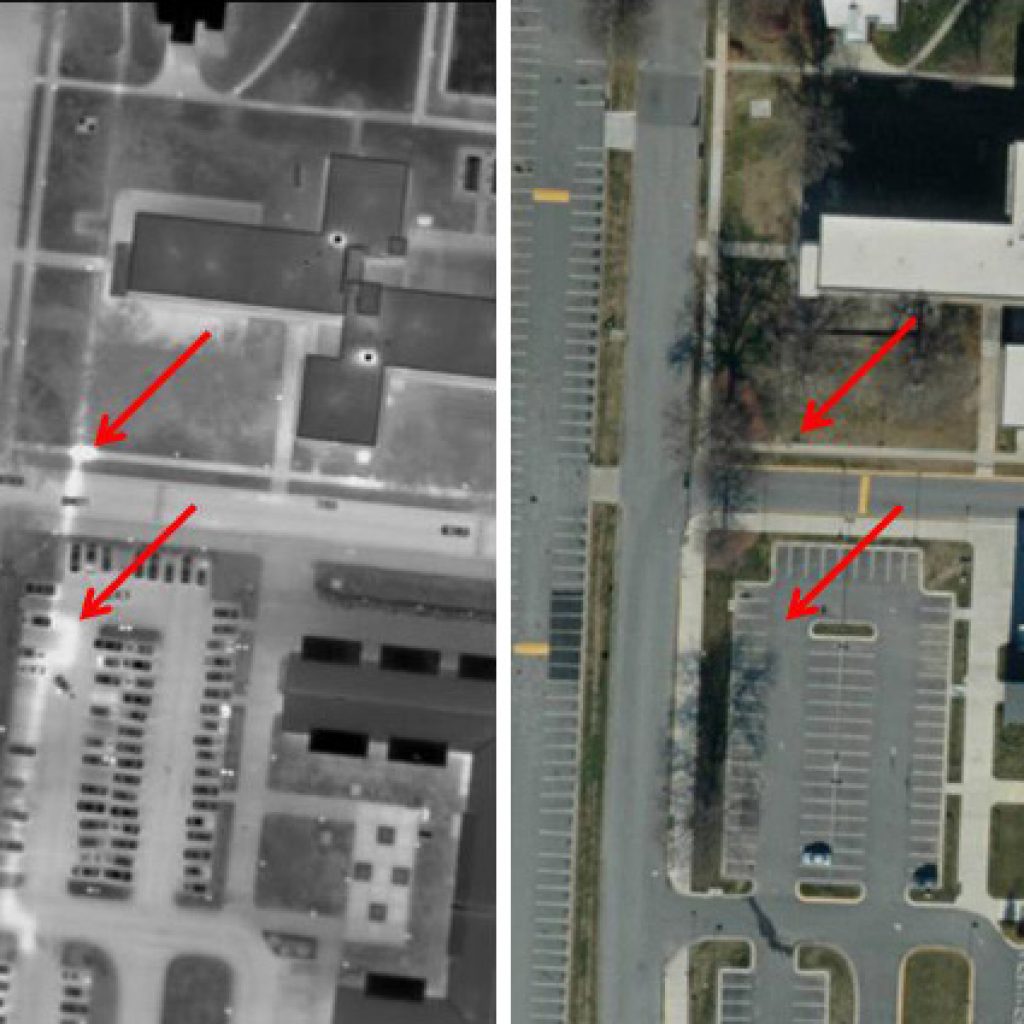
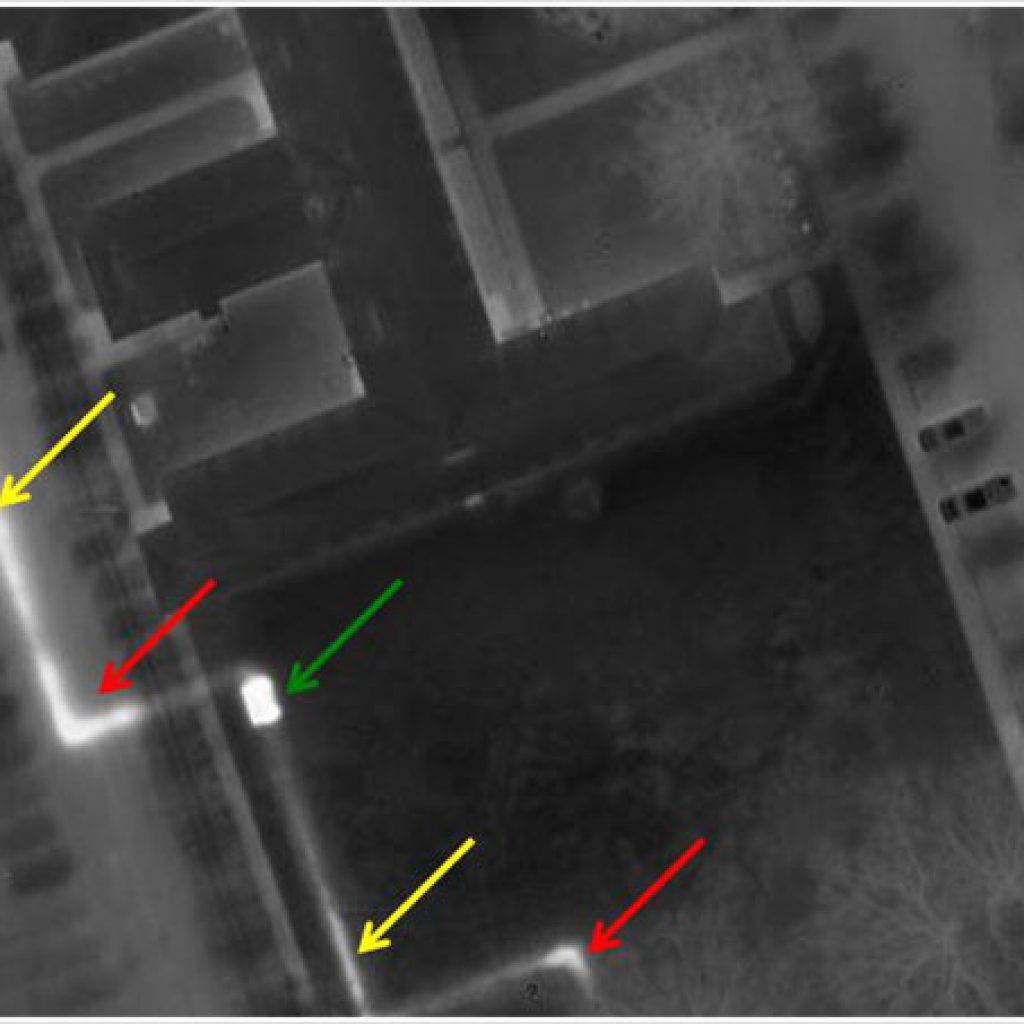


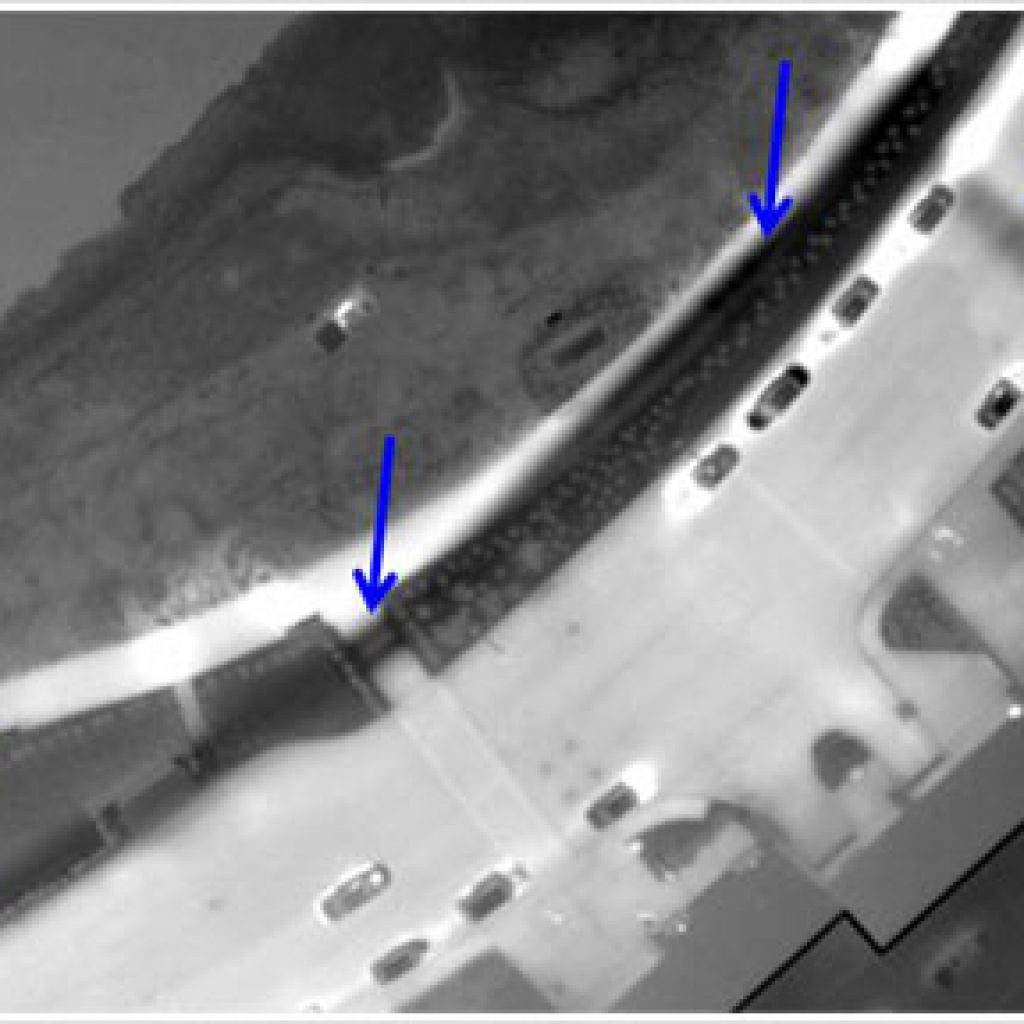
Roof Moisiture
Areas of roof moisture contamination often manifest themselves as warmer (lighter colored) areas on an infrared scan. These areas may be nebulous in shape and are sometimes mottled in appearance, though they are commonly found in linear or puddle-like shapes. The linear shapes often follow low areas, drainage routes, roof edges and seams. Puddle-like round or oblong shapes often form around roof penetrations such as mechanical equipment, standpipes, vents and drains.
Wet areas are lighter in color because the latent heat (from daylight sunshine) in the trapped water mass is greater than in the dry, functioning insulation or roof substrate. After sunset, when the roof structure cools down, wet areas of roof insulation and other materials continue to radiate heat, allowing our sensitive infrared cameras to detect the sources of heat and record them for later analysis.
Performing infrared roof moisture surveys while standing on the roof is not the best method because imagery from a walk-on survey is not as useful as aerial imagery. The same laws of physics apply to both aerial IR and on-roof IR. A dry roof, low winds and no rain are needed on the night of the survey. However, the “window” when the roof is radiating heat differently from wet and dry areas is longer with aerial infrared because slight nuances of temperatures over large areas are recognizable. A high angle of view and high resolution are needed to produce usable imagery.
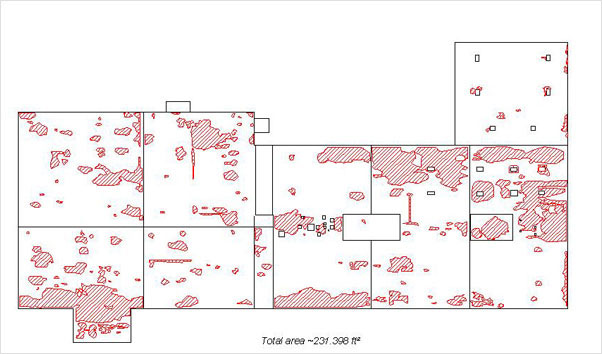
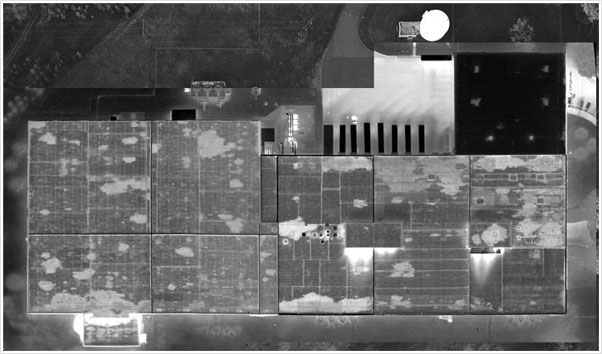
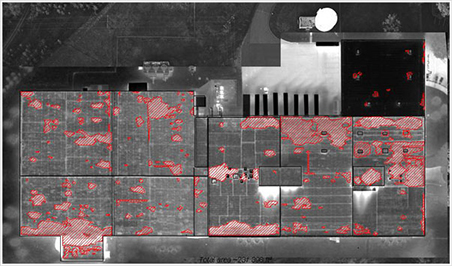
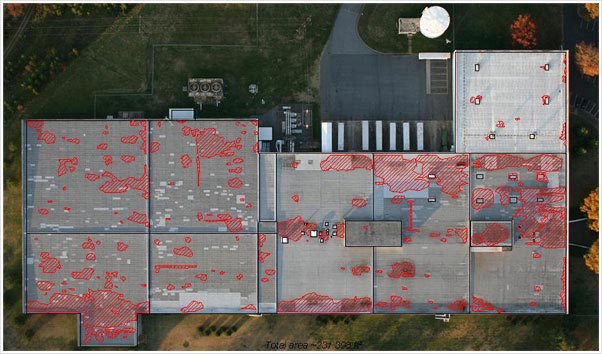

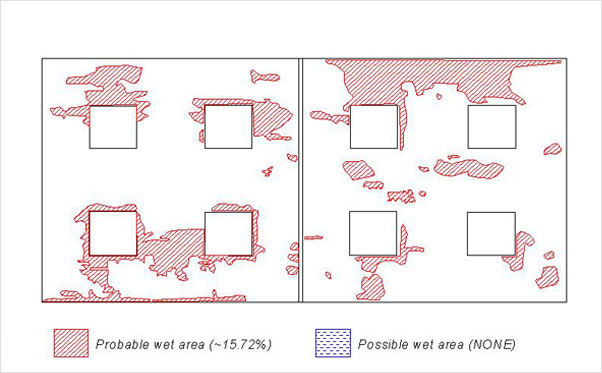
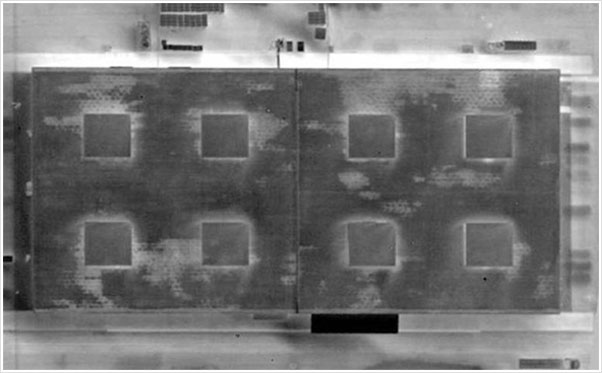
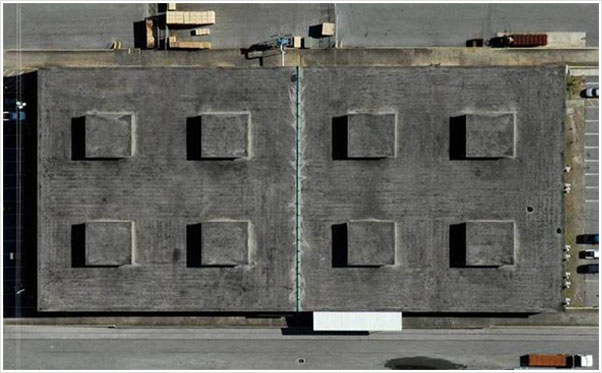
Waterway Systems
Leaking sewage collector lines, storm water drain discharges, and illegal taps into storm water drainage lines can often be identified by their thermal infrared signatures during certain times of the year. As these sources of pollution leak, seep or empty into creeks, streams, rivers and lakes, their thermal signatures differ from surroundings and can be pinpointed accurately from the air. Cool temperatures (lower than 40 degrees F) and dry (no rain in the last 48 hours) conditions are required. As a general rule, the lower the ground surface and the water surface temperatures, the more contrast the image will contain.
A given area of any waterway will exhibit near homogenous temperature patterns, except for areas where another liquid has joined the flow. This flow of liquid typically appears warm as compared to the surface water in a creek, stream, river or lake – particularly during cooler times of the year due to the relative warmth of the ground a short distance below the surface. Leaks from nearby lines often come to the surface through lateral transfer to a creek, stream, river or lake bed, or to a slope leading down to the surface of the water. These leak areas and the warm plume of liquid joining and flowing downstream with the body of water are visible in the thermal infrared spectrum due to the difference in temperatures of the two liquids.
Late fall, winter and early spring are well suited to this type of inspection because of cooler water temperatures (ground and surface waters) and less interference from foliage. Ground water seeps and outfalls of all types are also easily distinguishable during these times for similar reasons.

